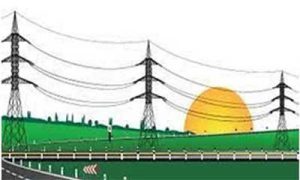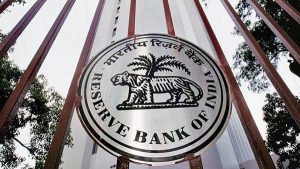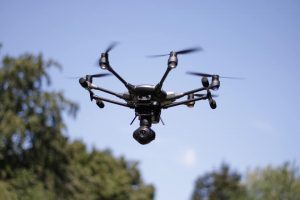Today Current Affairs: 8th January 2022 for UPSC IAS exams, State PSC exams, SSC CGL, State SSC, RRB, Railways, Banking Exam & IBPS, etc
Table of Contents
Increased Election Expenditure Limit:

The Election Commission has enhanced the existing election expenditure limit for candidates in Parliamentary and Assembly constituencies.
- These limits will be applicable in all upcoming elections.
- The ceiling on parliamentary poll expenditure has been raised from 70 lakh to 95 lakh rupees in bigger states and 54 lakh to 75 lakhs in smaller states.
- The bigger states include Maharashtra, Madhya Pradesh, Uttar Pradesh, West Bengal and Karnataka, and the smaller states include Goa, Sikkim, Arunachal Pradesh and UTs.
- The ceiling on poll expenditure in UT of Jammu and Kashmir has been raised to 95 lakhs.
- For Assembly constituencies, expenditure limits have been enhanced from 28 lakh rupees 40 lakh rupees in bigger states and from 20 lakhs to 28 lakhs in smaller states.
- Last major revision in the election expenditure limit was carried out in 2014, which was further increased by 10 percent in 2020.
- EC had formed a Committee to study the cost factors and other related issues, and make suitable recommendations.
Protection Of Women From Sexual Harassment (POSH) Act, 2013:

A petition has been filed in the Supreme Court challenging guidelines issued by the Bombay High Court in cases under the Protection of Women from Sexual Harassment (POSH) Act, 2013.
- The provision that challenged pertains to blanket bar on parties and advocates from sharing records, including orders and judgments, with the media.
- The guidelines were formed by Justice G.S. Patel of the Bombay High Court ostensibly to protect the identities of the parties in a case under the POSH Act.
- The petitioner argued that a blanket bar is against the freedom of speech and expression enshrined under Article 19.
- The petition said a well-informed citizenry governs itself better.
- Right to free speech can be curbed only if it interferes with the administration of justice.
- Any injunction on the right of the people to know true and accurate facts is an encroachment on their right to information.
- It can serve as a tool for powerful men to continue sexually harassing women and thereafter suppressing their voices on social media and in the news media.
- In matters of social justice and women empowerment, public discourse plays a crucial role in shaping the nature of legal entitlements that are delivered to women.
- The order may have a “ripple effect” and deter survivors from approaching courts as well as setting a dangerous precedent for trial cases.
- The legitimise undue protection to sexual offenders in gross violation of principles of open court and fundamental rights of survivors.
- An open court serves an educational purpose.
- The court becomes a platform for citizens to know how the practical application of the law impacts upon their rights.
Protection of Women Against Sexual Harassment Act, 2013:
- The Supreme Court in a landmark judgement in the Vishakha and others v State of Rajasthan 1997 case gave ‘Vishakha guidelines’.
- These guidelines formed the basis for the The Sexual Harassment of Women at Workplace (Prevention, Prohibition and Redressal) Act, 2013 (“Sexual Harassment Act”).
- The Act defines sexual harassment at the workplace and creates a mechanism for redressal of complaints.
- Every employer is required to constitute an Internal Complaints Committee at each office or branch with 10 or more employees.
- The Complaints Committees have the powers of civil courts for gathering evidence.
- The Complaints Committees are required to provide for conciliation before initiating an inquiry if requested by the complainant.
- Penalties have been prescribed for employers. Non-compliance with the provisions of the Act shall be punishable with a fine.
- Repeated violations may lead to higher penalties and cancellation of license or registration to conduct business.
- The State Government will notify the District Officer in every district, who will constitute a Local Complaints Committee (LCC) so as to enable women in the unorganised sector or small establishments to work in an environment free of sexual harassment.
Green Energy Corridor:

The Cabinet Committee on Economic Affairs approved the scheme on Green Energy Corridor (GEC) Phase-II for Intra-State Transmission System (InSTS).
- It aims at synchronizing the electricity produced from renewable resources, such as wind and solar, with the conventional power stations in the grid.
- It aims to achieve the target of 450 GW installed RE capacity by 2030.
- The objective of the GEC is to evacuate approx. 20,000 MW of large-scale renewable power and improvement of the grid in implementing states.
- It will contribute to the long-term energy security of India and will promote ecologically sustainable growth by reducing carbon footprint.
- It will facilitate in generating large direct and indirect employment opportunities for both the skilled and unskilled personnel.
GEC-1:
- Phase 1 of the Green Energy Corridor is already under implementation in Gujarat, Andhra Pradesh, Karnataka, Himachal Pradesh, Maharashtra, Madhya Pradesh, Tamil Nadu, and Rajasthan.
- It is working for the grid integration and power evacuation of about 24GW of Renewable Energy.
GEC-2:
- It will facilitate grid integration and power evacuation of approximately 20 GW of Renewable Energy (RE) power projects in seven States namely, Gujarat, Himachal Pradesh, Karnataka, Kerala, Rajasthan, Tamil Nadu and Uttar Pradesh.
- The transmission systems will be created over a period of five year from Financial Year 2021-22 to 2025-26.
- It is targeted to be set up with a total estimated cost of Rs. 12, 031 crores, and the Central Finance Assistance (CFA) will be 33% of the project cost.
- The CFA will help in offsetting the Intra-State transmission charges and thus keep the power costs down.
UJALA Scheme:

The Ministry of Power has successfully completed seven years of distributing and selling LED lights under its flagship UJALA (Unnat Jyoti by Affordable LEDs for All) programme.
- The initiative evolved into the world’s largest zero subsidy domestic lighting programme with more than 36.78 crore LEDs distributed across the country.
- Launched in 2015 and initially labeled as the LED-based Domestic Efficient Lighting Programme (DELP), it aims to promote the efficient usage of energy for all i.e., its consumption, savings and lighting.
- Energy Efficiency Services Limited (EESL), a government company under the administrative control of the Ministry of Power, has been designated as the implementing agency for this programme.
- Every domestic household having a metered connection from their respective Electricity Distribution Company is eligible to get the LED bulbs under the Scheme.
- UJALA succeeded in bringing down the retail price of LED (Light-Emitting Diode) bulbs from INR 300-350 per bulb to INR 70-80 per bulb.
- Apart from making affordable energy accessible to all, the programme also resulted in massive energy savings. As of today, 47,778 Million kWh per annum energy has been saved.
- Further, there has been 3,86 crore tonnes of reduction in CO2 emissions.
- It provides an impetus to the domestic lighting industry. It encourages Make in India as domestic manufacturing of LED bulbs has increased from 1 lakh per month to 40 million per month.
Sea Dragon 22 Exercise:

The US Sea Dragon 22 exercise began along with the navies of India, Australia, Canada, Japan and South Korea in the Pacific Ocean.
- India, Japan, Australia and the US are also part of the Quadrilateral Security Dialogue (Quad), and also participate in the Malabar exercise.
- Sea Dragon is a US-led multi-national exercise designed to practice and discuss Anti-submarine warfare tactics to operate together in response to traditional and non-traditional maritime security challenges in the Indo-Pacific region.
- It is an annual exercise.
- The exercise assumes significance in the face of strained relations that some countries have with China and the growing forays of the PLA-Navy into the Indian ocean region.
- The Indian Navy has recently inducted two more Poseidon 8I maritime reconnaissance and anti-submarine warfare aircraft, which would further boost its ability to keep an eye over the Chinese ships and submarines in the region.
The Foreign Contribution (Regulation) Act:

Among the 6,000 NGOs that did not have their FCRA registration renewed by the Ministry of Home Affairs (MHA) recently are also included the Tirumala Tirupati Devasthanams (TTD), the Ramakrishna Mission, and Shirdi’s Shri Saibaba Sansthan Trust (SSST).
- The Foreign Contribution (Regulation) Act registration is mandatory for any NGO or association to receive foreign funds or donations.
- The registration of thousands of NGOs was up for renewal in 2020-21. The Ministry had declined to renew the FCRA registration of 179 NGOs, while 5,789 associations did not apply for a renewal before the December 31 deadline.
- After the exercise, the number of active FCRA-registered NGOs is down from 22,762 to 16,907.
- FCRA regulates foreign donations and ensures that such contributions do not adversely affect the internal security of the country.
- The Act, first enacted in 1976 was amended in the year 2010 and then 2020.
- Section 5 of the Foreign Contribution (Regulation) Act, 2010 gives the Union government “unchecked and unbridled powers” to declare an organisation as being one of political nature and deny it access to funds from sources abroad.
- FCRA is implemented by the Ministry of Home Affairs.
- The provisions of the Act apply to the territory of India, to citizens of India who may be outside India and to companies or their branches outside India that are registered or incorporated in India.
- The entities covered by the Act include an individual, a Hindu undivided family, an association, or a registered company.
- It implies that to donate to such an NGO, a foreign donor has to take prior clearance from the Ministry of Home Affairs.
- The amendments(2020) mandated that registered NGOs open a designated account in the main branch of the State Bank of India in the Capital in which the foreign contributions to their various causes would exclusively land.
- The petitioners have argued that this measure would be cumbersome for NGOs operating in rural India and far away from the Capital.
- “Foreign contribution” under FCRA covers any “donation, delivery or transfer made by any foreign source of any article” as long as it is not given as a gift for personal use, or if its market value in India at the time it was made is “not more than such sum as may be specified from time to time by the Central government”.
Domestic Systemically Important Banks (D-SIBs):

Reserve Bank of India has released its list of Domestic Systemically Important Banks (D-SIBs) in 2021.
- It has identified the state-owned lender State Bank Of India and the private lenders ICICI Bank and HDFC Bank as systemically important banks, which are perceived as banks, ‘too big to fail’.
- The system of D-SIBs was adopted in the aftermath of the 2008 financial crisis where the collapse of many systematically important banks across various regions further fueled the financial downturn.
- D-SIBs are important for the country’s economy. In events of distress, the government supports such banks and if such a bank fails, it would lead to disruption of the country’s overall economy.
- RBI finalizes such banks after considering factors like size, complexity, lack of substitutability and interconnectedness of the banks, state reports.
- Since 2015, the RBI has been releasing the list of all D-SIBs. They are classified into five buckets, according to their importance to the national economy.
- In order to be listed as a D-SIB, a bank needs to have assets that exceed 2 percent of the national GDP. The banks are then further classified on the level of their importance across the five buckets.
- Due to their economic and national importance, the banks need to maintain a higher share of risk-weighted assets as tier-I equity. SBI, since it is placed in bucket three of D-SIBs, has to maintain Additional Common Equity Tier 1 (CET1) at 0.60 percent of its Risk-Weighted Assets (RWAs).
The Collective Security Treaty Organization (CSTO):

A Moscow-led military alliance dispatched troops to help quell mounting unrest in Kazakhstan as the police said dozens were killed trying to storm government buildings.
- Long seen as one the most stable of the ex-Soviet republics of Central Asia, energy-rich Kazakhstan is facing its biggest crisis in decades after days of protests over rising fuel prices escalated into widespread unrest.
- Under increasing pressure, President Kassym-Jomart Tokayev appealed overnight to the Russia-domina- ted Collective Security Treaty Organisation (CSTO), which includes five other ex-Soviet states, to combat what he called “terrorist groups” that had “received extensive training abroad”.
- The Collective Security Treaty Organization (CSTO) is an intergovernmental military alliance in Eurasia that consists of select post-Soviet states.
- Membership: Armenia, Belarus, Kazakhstan, Kyrgyzstan, Russia and Tajikistan.
- Headquarters: Moscow, Russia.
ICAR – Sugarcane Breeding Institute (ICAR-SBI):

ICAR – Sugarcane Breeding Institute (ICAR-SBI), Coimbatore in collaboration with Anamalai Tiger Reserve, conducted a campaign on “Knowledge empowerment of tribals’ and launched its STC (Scheduled Tribe Component) project at Attagatti in Anamalai Tiger Reserve (ATR), on 5 January 2022.
- Unlike other tiger reserves, the Anamalai Tiger Reserve has diverse groups of indigenous people, he mentioned.
- The ‘Malasar’ tribes are of great help to the Forest Department in training the elephants with their profound knowledge and skill on handling Asian elephants, the Deputy Director said that saving tribals is akin to saving forests.
- This is the first time this project is being implemented in ATR.
- The interventions by the Institute for implementing STC, was finalized based on a systematic need assessment by conduct of Focus groups among two tribes viz., ‘Malasar’ and ‘Malai malasar’ tribes belonging to the tribal settlements of Nagaroothu -1, Nagaroothu – 2, Old Sarkarpathy, Chinnarpathy, Koomaatti and Paalakinaru.
- Since over 47 lakhs of Indian tribal children suffer from chronic nutrition deprivation, the tribal community in these settlements, will be educated on setting up and maintaining a nutrition garden and kitchen garden seed kits will be distributed during this campaign on ‘knowledge empowerment of tribals’ .
24th Conference On E-Governance 2020-21:

Union Minister Dr Jitendra Singh will inaugurate the 24th Conference on e-Governance 2020-21 in Hyderabad on January 7, 2021.
- The two-day conference themed ‘India’s Techade: Digital Governance in a Post Pandemic World’ will be organized by the Department of Administrative Reforms and Public Grievances and Ministry of Electronics and Information Technology, in association with the Government of Telangana.
- During the event, National Awards for e-Governance 2021 will be presented under 6 categories to 26 e-Governance initiatives at Central, State and District levels and also to Academic and Research Institutions and Public Sector Undertakings.
- This includes 12 Gold, 13 Silver and 1 Jury Award.
- Delegates from 28 States and 9 Union Territories along with academia, research institutions, IT Industry would be participating in the conference through Virtual Mode.
Use Of Drones:

The Ministry of Civil Aviation has suggested to the other Ministries to promote effective use of Drone technology.
- This suggestion was made as part of the initiatives to make India a global hub for drones under the Atmanirbhar Bharat Abhiyan and in the backdrop of the Union Government rolling out the liberalised Drone Rules 2021.
- Drones offer tremendous benefits to almost every sector of the economy, national defence, agriculture, law enforcement, and mapping, among others.
- Drone is a layman terminology for Unmanned Aircraft (UA).
- Originally developed for the military and aerospace industries, drones have found their way into the mainstream because of the enhanced levels of safety and efficiency they bring.
- A drone’s autonomy level can range from remotely piloted (a human controls its movements) to advanced autonomy, which means that it relies on a system of sensors and LIDAR detectors to calculate its movement.
Application of Drone Technology:
- Drone system can be used as a symmetric weapon against terrorist attacks.
- Drones can be integrated into the national airspace system.
- Deployment of drones for combat, communication in remote areas, counter-drone solutions can be done.
- Recently, the Ministry of Civil Aviation has approved a project with the Telangana government for using drone technology to deliver vaccines in remote areas.
- In the agriculture sector, micronutrients can be spread with the help of drones.
- It can also be used for performing surveys for identifying the challenges faced by the farmers.
- The drone technology in the SVAMITVA scheme launched by the Government of India, within less than a year, has helped about half a million village residents to get their property cards by mapping out the abadi areas.
- Drones can be used for real-time surveillance of assets and transmission lines, theft prevention, visual inspection/maintenance, construction planning and management, etc
- They can be used for anti-poaching actions, monitoring of forests and wildlife, pollution assessment, and evidence gathering.
- Drones are also significant for the law enforcement agencies, the fire and emergency services wherever human intervention is not safe and the healthcare services.
Risks:
- Increased Risk of Armed Attacks: Operation of drones without any adequate legal backing can pose several security threats.
- Incidents of arms being dropped by drones are also there such as the recent Jammu drone attacks.
- They can be put to destructive use, to slam into critical targets, destroy infrastructure and so on.
- Paramilitary Not Exempted from the Rules: The drone rules 2021 are not applicable to the army, navy or the airforce.
- However, it still includes paramilitary forces. BSF is suffering a lot of issues due to the drones coming across the lines.
- Cheaper Cost Enables a Larger Population to Procure Drones: Drones are relatively cheaper in comparison to conventional weapons and yet can achieve far more destructive results which is the primary reason for increased number of drone attacks.
- Delivery of Mass Destruction Weapons: What makes combat drones most dangerous is the threat of them being used to deliver weapons of mass destruction.
- Procurement of combat drones by non-state actors poses serious threats.




